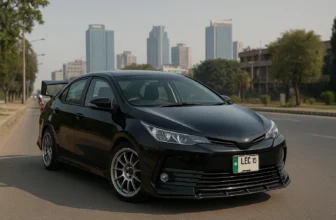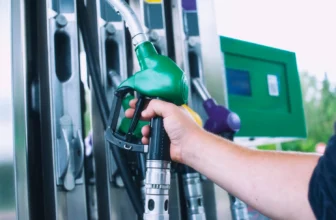
Understanding Flood Damage in Karachi’s Market
Karachi’s monsoon season is more than a traffic nightmare; it is a vehicle killer. During heavy downpours, areas like DHA, Korangi, Saddar, and North Karachi experience knee-deep water, leading to cars getting submerged for hours or days. This water exposure causes extensive electrical, mechanical, and cosmetic damage that often gets hidden through cosmetic repairs. Water seeps into electrical wiring, damaging sensitive ECUs, sensors, and modules, which later results in unpredictable failures. Rust develops silently in door sills, under carpets, and inside the chassis. In many cases, even if the car looks and smells clean after detailing, the structural and electrical integrity is permanently compromised, making these vehicles unsafe and financially draining for buyers who unknowingly purchase them.
Why Sellers Push Flood Cars After Monsoons
After the monsoon season, many owners and dealers in Karachi rush to offload flood-damaged vehicles to avoid long-term repair costs and loss of resale value. Unscrupulous dealers often perform quick fixes, including deep cleaning, odour masking with heavy perfumes, and temporary electrical bypasses, to make these vehicles appear problem-free for a quick sale on platforms like PakWheels and OLX. In some cases, documentation of the flood event is deliberately omitted or manipulated, making it nearly impossible for an untrained buyer to detect the car’s true condition. Because demand for affordable vehicles remains high, especially for popular models like Suzuki Alto, Toyota Vitz, and Honda Civic, flood-damaged cars slip back into the market, creating a hidden epidemic that impacts unsuspecting buyers across Karachi’s used car scene.
Key Signs of Flood Damage During Inspection
Detecting flood damage requires a careful and systematic approach during vehicle inspections. Here are practical, on-ground checks to protect yourself when evaluating cars post-monsoon in Karachi:
- Odour and Moisture Checks: A musty or moldy smell inside the cabin is a red flag, even if masked with perfumes. Check under carpets and in the boot for moisture or dampness.
- Rust in Unusual Areas: Inspect seat rails, under the dashboard, spare wheel wells, and under the bonnet for rust or water stains.
- Electrical Irregularities: Test all electronics, including windows, central locking, infotainment, and lights. Flickering lights or malfunctioning electronics may indicate water damage.
- Headlights and Tail Lights: Look for condensation or waterlines inside the lights, indicating prolonged water exposure.
- Mud and Silt: Check hidden crevices like under the seats, inside the glovebox, and under the spare tyre for dried mud or silt residue.
By performing these inspections and not rushing your purchase decision, you can avoid getting stuck with a flood-damaged vehicle that will drain your wallet and endanger your safety on Karachi’s already challenging roads.
Using Diagnostic Tools and Expert Inspections
While physical inspections help detect visible signs of flood damage, using diagnostic tools and expert inspections adds another layer of protection when buying a used car in Karachi. An OBD (On-Board Diagnostics) scanner can help detect hidden error codes related to the engine, transmission, and electrical systems that may not display immediately on the dashboard. Flood-damaged vehicles often have intermittent sensor failures or hidden airbag and ABS issues that require deep scanning to uncover. For imported vehicles like Vitz, Aqua, or Mira, it’s essential to take the car to a trusted mechanic or inspection center such as Al Rauf Autos, Toyota Central Motors, or PakWheels Inspection Services to conduct a thorough underbody, electrical, and engine bay check. Spending a few thousand rupees on an expert inspection can save you from losing lakhs later in repairs, ensuring you’re not stuck with a compromised vehicle that fails during Karachi’s humid, traffic-heavy conditions.
Market Platforms: Risks and How to Navigate Them
In Karachi, used cars are primarily sold on platforms like PakWheels, OLX, and through local dealers in areas like Khalid Bin Waleed Road and Tariq Road. However, these platforms often lack strict verification, and flood-damaged vehicles can be disguised with attractive photos and detailed listings. When using these platforms:
- Always request a recent service history to cross-check maintenance gaps during flood months.
- Check seller ratings and history, especially on PakWheels Certified listings.
- Avoid making token payments before inspection, even if the seller claims urgency.
- For imported cars, insist on an auction sheet and verify its authenticity with PakWheels Auction Sheet Verification or similar services.
- Be cautious with cars priced significantly below market value, especially during or after the monsoon season, as these can indicate hidden flood damage.
By being cautious and using platform tools smartly, you can reduce the risk of buying a flood-damaged car while navigating Pakistan’s used car market confidently.
Legal and Financial Implications of Buying Flood-Damaged Cars
Purchasing a flood-damaged car in Karachi carries not just mechanical risks but also legal and financial implications
Safe Buying Checklist for Karachi Buyers
Buying a used car in Karachi during or after the monsoon season requires a structured approach to avoid falling into the trap of purchasing a flood-damaged vehicle. Use this practical checklist when inspecting cars to protect your investment and safety:
- Check for Moisture and Odour: Inspect under the carpets, in the boot, and under the seats for dampness or mold smells, even if the car has been cleaned recently.
- Inspect Electrical Systems: Test windows, lights, infotainment, AC controls, and dashboard electronics to ensure they work flawlessly, looking for flickers or intermittent issues.
- Look for Rust: Use a flashlight to check under the seats, under the dashboard, in the engine bay, and the spare tyre compartment for unusual rust patterns or mud residue.
- Use a Diagnostic Tool: Carry an OBD scanner or get a scan done to detect hidden sensor or module errors related to water damage.
- Verify Seller and Vehicle History: Check auction sheets, service records, and seller credibility. Avoid rushing purchases, especially if the deal seems too good to be true post-monsoon.
- Book a Professional Inspection: Before payment, have the vehicle inspected by a trusted workshop like Al Rauf Autos, Toyota Central Motors, or PakWheels Inspection to identify non-visible flood damage.
By following this checklist, you can reduce the risk of buying a compromised vehicle, ensuring your investment remains secure and your driving experience in Karachi remains safe.
Conclusion
Karachi’s monsoon season may be unavoidable, but falling victim to flood-damaged cars in the used car market doesn’t have to be your fate. Understanding the risks, learning to identify water damage, and adopting a disciplined inspection process can save you from endless repairs, safety hazards, and financial setbacks. Remember, the cost of an expert inspection or thorough diagnostic scan is minimal compared to the loss you could incur by unknowingly purchasing a flood-damaged vehicle. As your automotive advisor, I encourage you to stay informed, cautious, and always prioritize safety over short-term savings when making vehicle purchase decisions in Karachi’s challenging market.
Ready to protect your next car purchase? Download our free Karachi Flood Car Buyer’s Checklist or book a pre-purchase inspection with Tyre Point to secure your investment and avoid hidden risks. Drive smart, drive safe.






